The Swallows are sharply pointed, angled wings and fork-tailed birds. They are in the Hirundinidae family. The Swallows are territorial birds and usually return to the same nesting site each year. The types of swallows are 75 different types worldwide and shared throughout the continent. There are seven native types of swallows birds found in North America.
Most Common Types of Swallows
The Barn Swallow, Cliff Swallow, Bank swallows, and Tree Swallow can be seen from the Atlantic to the Pacific coast and into Alaska and Northern Canada. Swallows are in Arabic called Ababil. The birds are mostly found near water, and most swallow species build their nests from mud. They feed on insects, and these acrobatic catch their prey as they maneuver through the air.
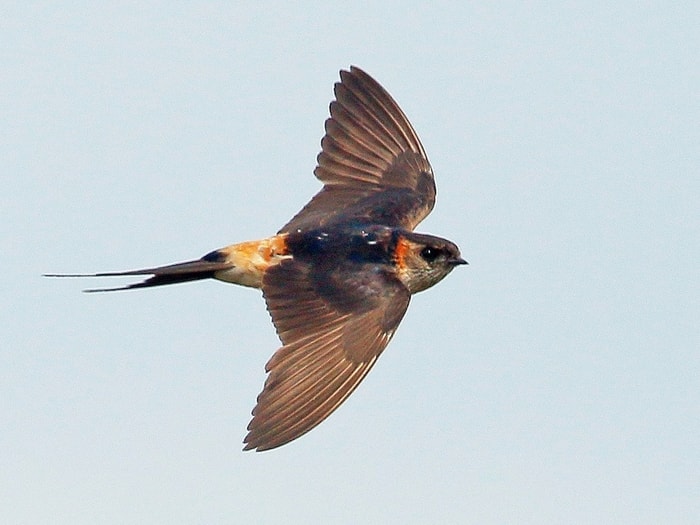
1. Barn Swallow
The scientific name of the Barn Swallows is Hirundo rustica. The size is about 18 cm, and their voice- calls vary with the object of alarm, Hard it in flight, and twittering rambling song. The range are-common breeding residents to N mountains from W Pakistan east to Myanmar border. Familiar winter visitors throughout the rest of the region.
Their habitats are- cultivation, towns, and villages usually near or over water. Slender bird with long, narrows, pointed wings, and deeply forked tail with long streamers; spends most of its life on the wing. Steel bluish-black upperparts; black wings and tail; pale underparts; red throat; steel-blue breast-band. Sexes alike, but males may have longer streamers. Juvenile has paler underparts and less deeply forked tail. Agile flier; low, fast, powerful in flight. Constructs nest under eaves of buildings. Gregarious.
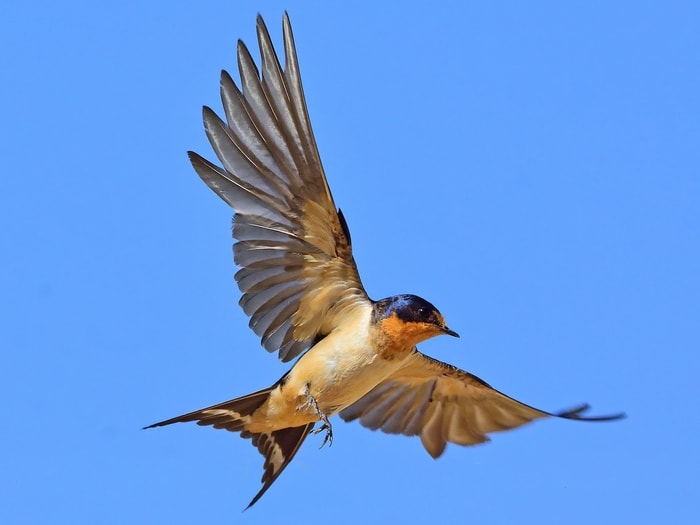
2. Types of Swallows: Hill Swallow
The scientific name of the Hill Swallow is Hirundo domicola. The size is about 12.5 cm and their voice- calls an abrupt, high-pitched chit. Song a pleasant twittering. The range is the Western Ghats and Sri Lanka hill zone, wandering to foothills. Their habitats are- Grassy hills around tea and coffee plantations, bungalows, and factory sheds.
Similar to pacific but smaller with a longer tail and metallic green iridescence to upperparts. Feeds on the tiny flying insects on the wing; in small flocks, sometimes with red-rumped swallows, barn swallows; nest a cup of mud and straw licensed with feathers and bracketed on the wall, road-bank, or earth slips. Less gregarious than Barn. Often perches on telegraph wires.
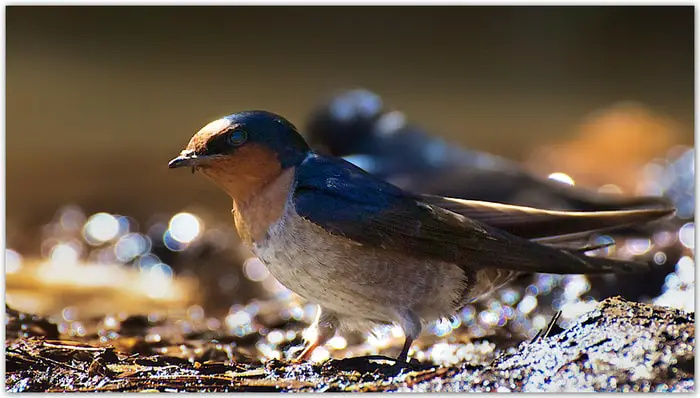
3. Pacific Swallow
The bird’s scientific name is Hirundo tuhitica, and its size is about 13 cm. Their voice calls a hard qwik, and the range is- residents in the Andaman Islands. Their habitat- open country and along coasts and rivers.
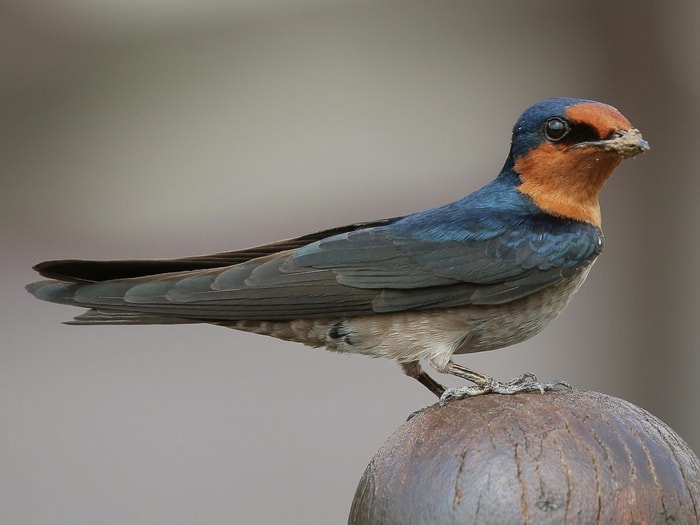
Blue-black upper parts; short, forked-tail. Rufous from forehead to breasts; greyish-white belly; dark grey vent with white scallopings; grey underwing-covers. They are distinguished from Barn by the lack of blue breast-brand and streamers. Hunts alongside Barn but does not associate with them otherwise. Feeds sociably on aerial insects—flightless sweeping than Barn. Often perches on wires and bare branches—nests against the wall in the building or the bank or ditch.
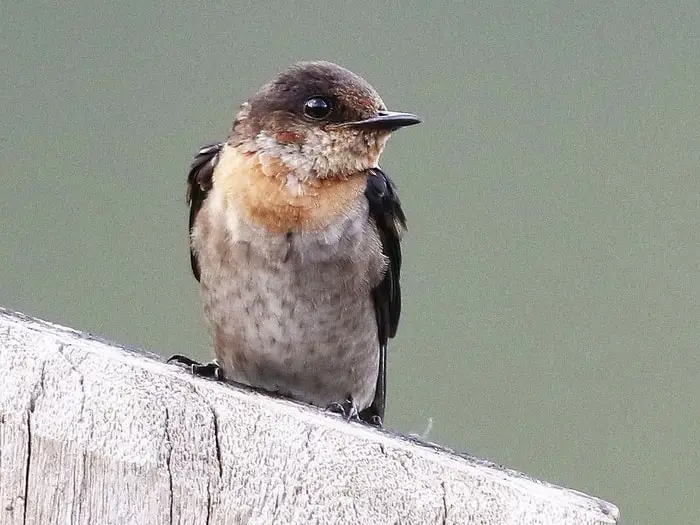
4. Wire-Tailed Swallow
The bird’s scientific name is Hirundo smithii, and the size of the bird is about 14 cm. Their voice is called a soft twittering. The bird’s habitat is- open areas, cultivation, habitation, mainly in the vicinity of canals, lakes, rivers. The range is the typical breeding visitor to N India, to about 1,800 m in the Himalayas; breeds in many other parts of India; widespread over the area.
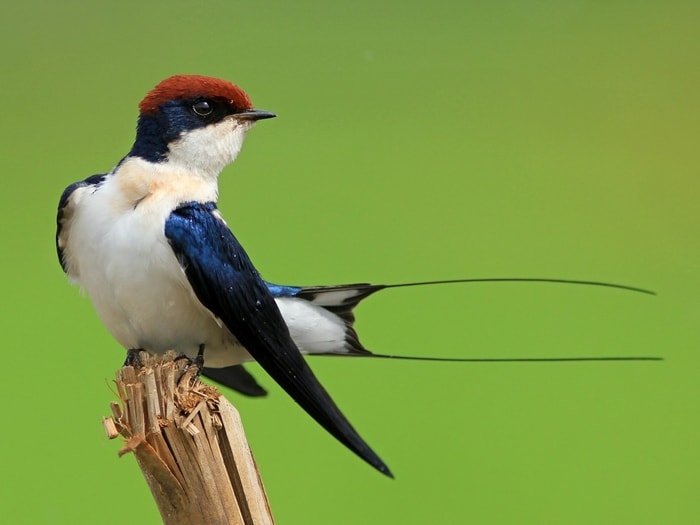
The birds have glistening steel-blue above; chestnut cap; unmarked, pure white underbody distinctive; two long, wire-like projections from outer-tail feathers diagnostic. Sexes alike. In solitary, or small parties; almost always seen around water, either perched on overhead wires or hawkings insects in graceful, acrobatic flight, swooping and banking often fly very low, drinks from the surface; roosts in reed beds and other herbs, often with warblers and wagtails.
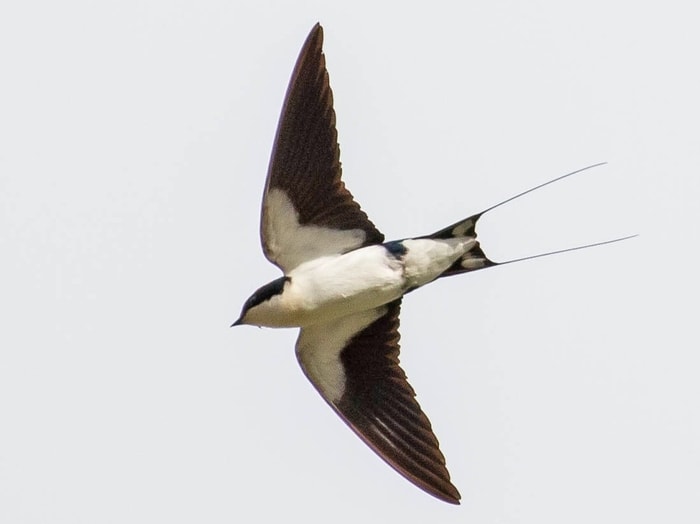
5. Types of Swallows: Red-Rumped Swallow
The bird’s scientific name is Cecropis daurica, and the size of the bird is about 18 cm. Their voice- call a mournful chirping note. Lovely twittering song of breeding male and the range is six races over the subcontinent, including Sri Lanka. The habitat of the bird is- cultivation, vicinity of human habitation; town centers, rocky, hilly areas.
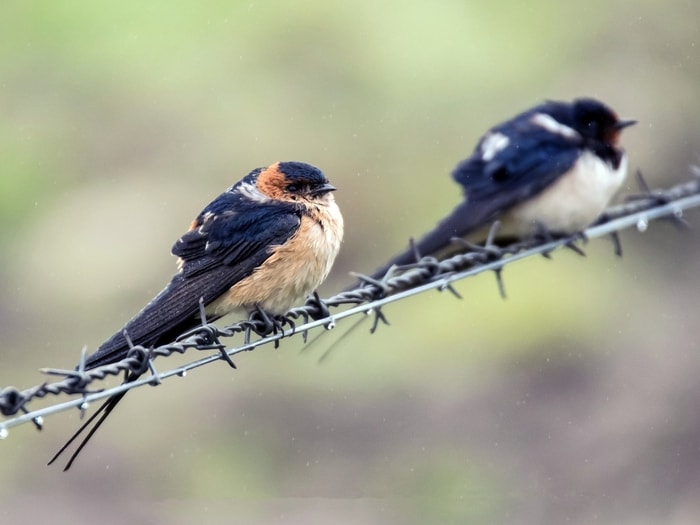
Glossy steel-blue above; chestnut supercilium, head sides, neck-collar, and rump; dull rufous-white below, streaked brown; deeply forked-tail diagnostic. Sexes alike. Small parties spend much of day on the wing; migrant, winter-visiting race nipalensis highly gregarious; hawks insects along with other birds; freely perches on overhead wires, thin branches of bushes and trees; hunts insects amongst most-crowded areas of towns, over markets and refuse heaps, flying with fantastic agility, wheeling, banking and stooping with remarkable mastery.
6. Striated Swallow
The bird’s scientific name is Cecropis striolata, and its size is about is 19 cm. Their voice- call a pin or long-drawn-out quits, and chi…chi…chi when alarmed. Song a soft twittering, and the range is NE India and Bangladesh hills. The habitat of the is- little information from the region; around cliffs in hills.
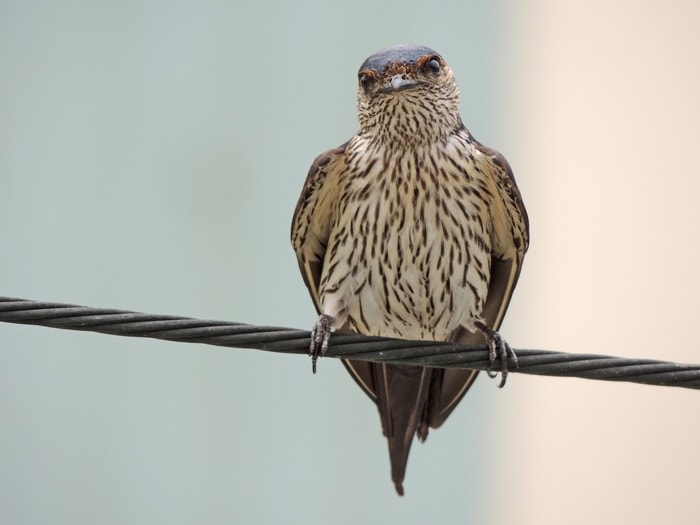
Glossy steel-blue crown and back; indistinct, rufous hind-collar; narrowly streaked chestnut rump; deeply forked-tail; dark chestnut face and underwing-coverts. Similar to Red-rumped, but distinguished by larger size, stronger streaking on underparts and broader, blacker streaking on the rump. Juvenile less glossy with the paler rump. Feeds singly or in small groups. Nest enclosed, with the long tunnel, made of mud.
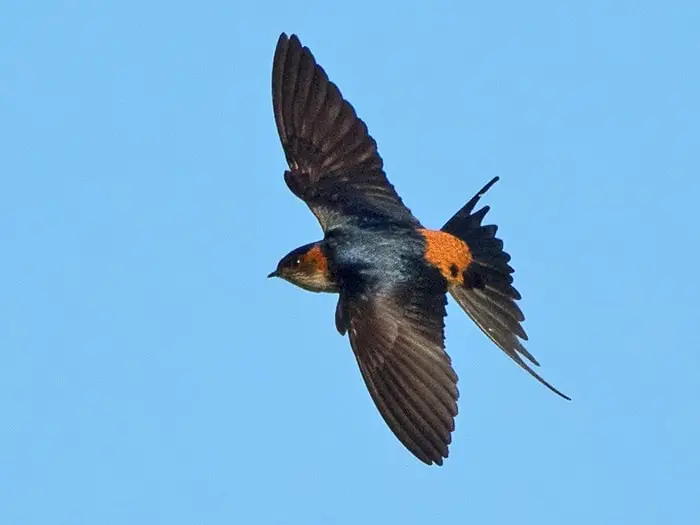
7. Streak- Throated Swallow
The bird’s scientific name is Petrochelidon fluvicola, and the size of the bird is about 12 cm. Their voice-calls include chrrp, and trr…trr… and the range is locally common breeding residents in Indo- Gangetic Plains from E Pakistan to Uttar Pradesh and south through W peninsula to Karnataka, mainly summer visitors to N areas. The habitat is open country, cultivation near water.
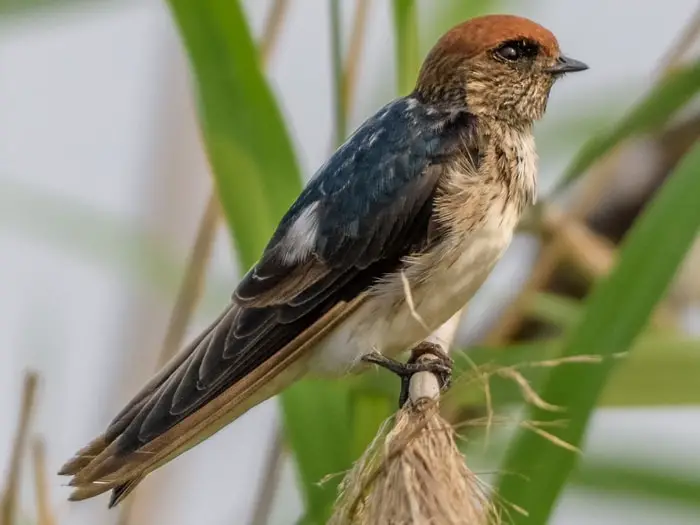
Glossy black upperparts; some whitish edges to dorsal feathers; dark-rufous crown; brownish rump; white underparts with black mesial streaks to feathers from throat to breast; pale brown underwing; tail slightly furcate, small whitish spot towards tip of the inner web of each feather. Upto 200 birds nest communally on cliff faces.

Concluding Remarks on Types of Swallow
The swallows are the most famous and attractive jungle birds. The birds are found worldwide and loved by nature-lovers. There are many types of swallows found throughout the world. Most of the swallows are found in the Indian subcontinents, including India, Nepal, Pakistan, Bhutan, and Myanmar. This article will help you identify and recognize the common types of swallows and their characteristics.
